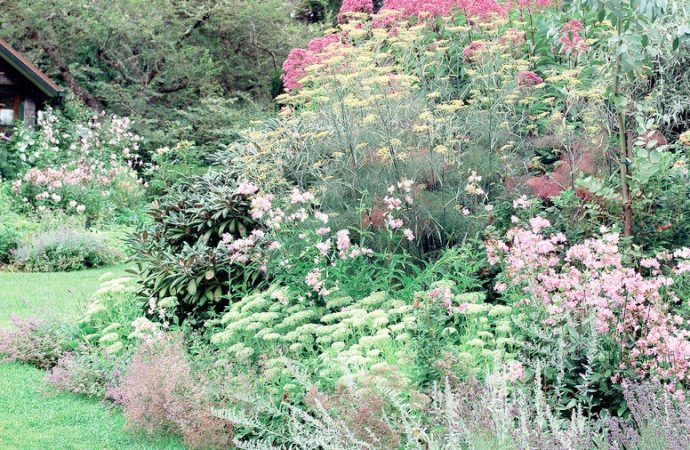Spring is an exciting time; the garden is coming back to life and we have time to review our borders (like the one pictured) and planting schemes, deciding what worked well last year and what needs changing. There may be gaps in the borders where plants have died or planting combinations just didn’t cut it,
There may be gaps in the borders where plants have died or planting combinations just didn’t cut it, so we need to try something new.
I always think it’s difficult to replant or revitalise small areas of the garden. It’s like introducing newcomers to a bunch of old schoolfriends at a party and hoping they will fit in!
Some years ago, I attended a lecture given by a plantsman who described his role as that of a conductor. The plants were the instruments that made up his orchestra, just as the various sections – strings, wind, brass, percussion – all had to play well together to create wonderful music.
Just like an orchestra, a beautiful garden needs a range of plants to work together and harmonise.
Although this sounded rather highfalutin at the time, the point was well made. There are countless books out there that will give you encyclopedic knowledge of a plant’s characteristics but when it comes to putting those plants together in an exciting way, it is more of an art than a science. Indeed, it’s often the visual surprise in the garden that makes it come alive.
I like to think of plants as design tools, noting their shape, leaf texture, foliage, colour and habit. Do they trail or climb? Do they anchor a bed with their sturdy stems and dense foliage, or are they delicate and wispy? Flowers are ephemeral so I consider how they will look throughout the year, not just at their peak in the flowering season.
One of the best ways to study plants as design tools is to observe them season by season by visiting as many gardens as you can and noticing what schemes or combinations appeal to you most, and asking yourself why. I sometimes screw my eyes up to look at plant shapes and densities as a black and white image is easier to analyse. I try to ignore the strange looks!
For the ultimate in inspiring plant design, a visit to the RHS Chelsea Flower Show from May 21-25 is a must. Tickets are still available but sell out fast. To book visit www.rhs.org.uk










Leave a Comment
Your email address will not be published. Required fields are marked with *